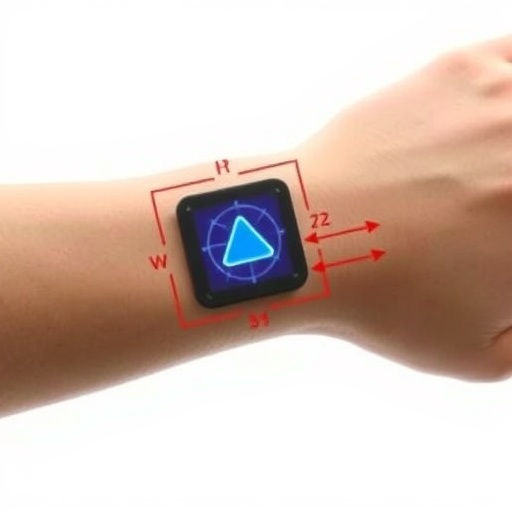In the rapidly evolving landscape of technology, the integration of haptic feedback systems into augmented and virtual reality applications marks a significant leap forward. As these technologies strive to enhance user immersion, particularly in scenarios necessitating fine motor skills, the need for more sophisticated, lightweight, and user-friendly haptic devices has become paramount. Recent advancements have led to the development of an innovative finger-worn device that promises to transform users’ tactile experiences, making them not only more realistic but also more comfortable.
Traditional haptic feedback technologies have often been encumbered by cumbersome and rigid equipment, which can detract from the overall user experience. The discomfort and restriction caused by such devices can render them unsuitable for extended use during complex tasks that require intricate finger movements. The latest breakthrough in haptic technology responds to these challenges with a flexible and lightweight design, significantly enhancing user wearability and comfort. This new device allows for a dynamic range of cutaneous feedback tailored to the nuances of individual user interactions.
At the heart of this cutting-edge technology lies the use of serpentine shape memory alloy structures, which are pivotal in facilitating nuanced tactile sensations. These structures are strategically arranged in opposing pairs, enabling the device to manipulate a tactor with precision. The intricacies of the design allow for both individual and collective actuation patterns, creating an expansive vocabulary of haptic gestures. This innovative mechanism can replicate a total of 11 distinct motions, thereby enabling a rich tapestry of haptic sensations that cater to various applications in virtual and physical environments.
The user-centric approach taken in this device’s design ensures that it fits snugly and comfortably on the user’s finger. Constructed using a soft, three-dimensionally printed flexible material, the device contours to the natural shape of the finger, eliminating the discomfort often associated with traditional haptic gear. An elastic cover enhances this comfort further by ensuring that the device remains secure yet unobtrusive during use. This careful consideration of ergonomics is vital for facilitating sustained interaction, particularly in gaming, training simulations, and other activities that require extended periods of use.
Moreover, the versatility of this haptic interface allows it to be utilized across a wide range of applications, spanning both virtual simulations and real-world tasks. Whether for gaming, virtual learning, or simulations that require precise manipulation of digital objects, the device’s capabilities offer a significant advantage over existing technologies. This extension of function not only enriches user experience but also opens new avenues for research and application in both consumer and professional domains.
The implications of mastering nuanced haptic feedback cannot be overstated. Enhanced tactile sensations can lead to improved performance in virtual environments, making tasks like object manipulation feel more authentic. For instance, in virtual reality gaming, players can experience the sensation of picking up and manipulating objects with a level of realism that was previously unattainable. Similarly, in professional training environments, such as medical simulations, practitioners can gain invaluable tactile experience that translates effectively into their real-world skills.
Researchers and developers working on the forefront of haptic technology must consider not just technical feasibility but also user experience. The introduction of a finger-worn haptic device that emphasizes comfort and usability represents a significant step in this direction. By prioritizing both functionality and user satisfaction, developers are poised to reshape how haptic technologies are perceived and utilized across diverse fields. It is a clear indication that the future of technology will be increasingly centered around human-centric design principles.
In conducting this research, scientists have harnessed a sophisticated blend of materials science, mechanical engineering, and user experience design. The intricate balance of these elements has resulted in a device that is not only functional but also highly adaptable to various user needs. The interplay between responsive actuation and ergonomic design is central to achieving the heightened level of immersion that this technology aims to provide.
As we look to the future, the potential applications for this device are vast. From immersive educational tools that engage students in hands-on learning without physical materials to sophisticated gaming experiences that challenge players’ skills in entirely new ways, the possibilities are exhilarating. The research underscores the importance of continued investment in haptic technologies that prioritize tactile accuracy and user comfort, paving the way for an expanded spectrum of interactive experiences in both real and imagined worlds.
In conclusion, the advent of this flexible haptic feedback device heralds a new era in sensory technology. By overcoming existing limitations associated with conventional haptic systems, this innovation holds the promise of significantly enhancing user immersion in augmented and virtual reality. As the boundaries of what is technologically possible continue to be pushed, it is crucial for researchers and developers to maintain a focus on creating solutions that are not only advanced but also accessible and comfortable for users.
The potential for this technology to influence various sectors, from entertainment to education and beyond, cannot be overlooked. By marrying a deep understanding of human interaction with advanced material science and engineering, this development showcases the remarkable strides being made in the pursuit of more engaging and realistic user experiences. As we embrace these advancements, the future of haptic technology appears not only promising but also profoundly transformative in how we interact with digital and physical worlds.
Subject of Research: Haptic Feedback Systems in Augmented and Virtual Reality
Article Title: A flexible skin-mounted haptic interface for multimodal cutaneous feedback
Article References:
Kang, B., Zavanelli, N., Sue, G.N. et al. A flexible skin-mounted haptic interface for multimodal cutaneous feedback.
Nat Electron 8, 818–830 (2025). https://doi.org/10.1038/s41928-025-01443-w
Image Credits: AI Generated
DOI: https://doi.org/10.1038/s41928-025-01443-w
Keywords: Haptic feedback, augmented reality, virtual reality, tactile sensations, wearable technology




